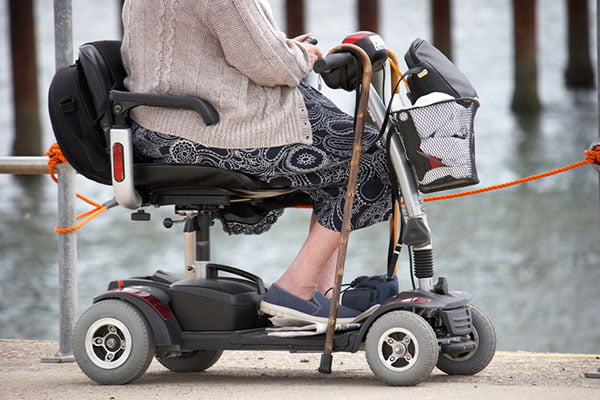The question of where to place a walking stick on a mobility scooter may appear trivial to some, but it’s a concern that impacts many individuals who rely on both walking aids and mobility scooters for their daily activities. Given the varied designs and functionalities of mobility scooters, it’s essential to address this issue to enhance both safety and convenience for users.
The Importance of Proper Placement
Understanding the optimal placement of a walking stick on a mobility scooter is not just about convenience—it’s also about safety. Improperly placed walking sticks can cause obstructions, reduce manoeuvrability, and even pose a fall risk. Therefore, knowing where to place the walking stick is paramount for anyone using these mobility aids.
“Safety is not just about avoiding accidents; it’s also about creating an environment where users can move freely and comfortably.”
Common Places for Walking Stick Storage
1. Under the Seat Compartment
Many mobility scooters come with an under-the-seat storage compartment. This space is usually intended for personal belongings but can sometimes accommodate a folding walking stick.
2. Side Holders
Specialised walking stick holders that attach to the side of the mobility scooter can be an excellent option. These holders keep the stick within arm’s reach.
3. Rear Bag
A rear basket is another common accessory where you can place the walking stick. However, it might be slightly inconvenient to reach behind to get the stick when needed.

The Black & Grey Mobility Scooter/Wheelchair Backpack is a versatile storage accessory designed to fit any traditional mobility scooter or wheelchair. It offers ample space with multiple internal and external pockets, along with waterproof protection. The bag features a PVC base insert for extra support and can be easily adjusted using side release buckles. It is also interchangeable; simply unclip the bag while leaving the buckles in place. Side mesh pockets offer additional storage options. The bag’s dimensions are 400mm (L) x 310mm (W) x 130mm (D), making it a practical and convenient addition for any mobility device user.
4. Customised Solutions
Some people prefer custom solutions, which may include Velcro straps or clamps that hold the stick securely in a designated spot.
Comparing Storage Options
| Storage Option | Pros | Cons |
| Under the Seat | Concealed, secure | Limited space |
| Side Holders | Easy access, secure | May interfere with manoeuvrability |
| Rear Basket | Ample space, easy to install | Hard to reach, less secure |
| Custom Solutions | Secure, tailored fit | May be costly, requires modifications |
Things to Consider When Choosing a Storage Spot
- Accessibility: Can you easily reach the walking stick?
- Security: Is the walking stick securely held in place?
- Manoeuvrability: Does the placement impede the scooter’s movements or your visibility?
- Convenience: Is it easy to place and remove the walking stick?
Frequently Asked Questions
- Can any walking stick fit into standard holders?
Most standard holders are designed to accommodate various types of walking sticks, but it’s always best to check the specifications.
- Is it safe to DIY a walking stick holder?
DIY solutions can be safe if done correctly, but it’s recommended to consult with professionals or rely on tested products.
- Can the placement affect the scooter’s balance?
Incorrect placement can potentially affect the scooter’s balance, particularly at higher speeds or on uneven terrain.
Conclusion
Knowing where to place your walking stick on a mobility scooter can greatly enhance your experience and safety. Whether you choose an under-the-seat compartment, a side holder, a rear bag, or a customised solution, the key factors to consider are accessibility, security, manoeuvrability, and convenience. By giving proper attention to these aspects, you can make an informed decision that will serve you well in your daily life.
Last update on 2025-03-16 / Affiliate links / Images from Amazon Product Advertising API

